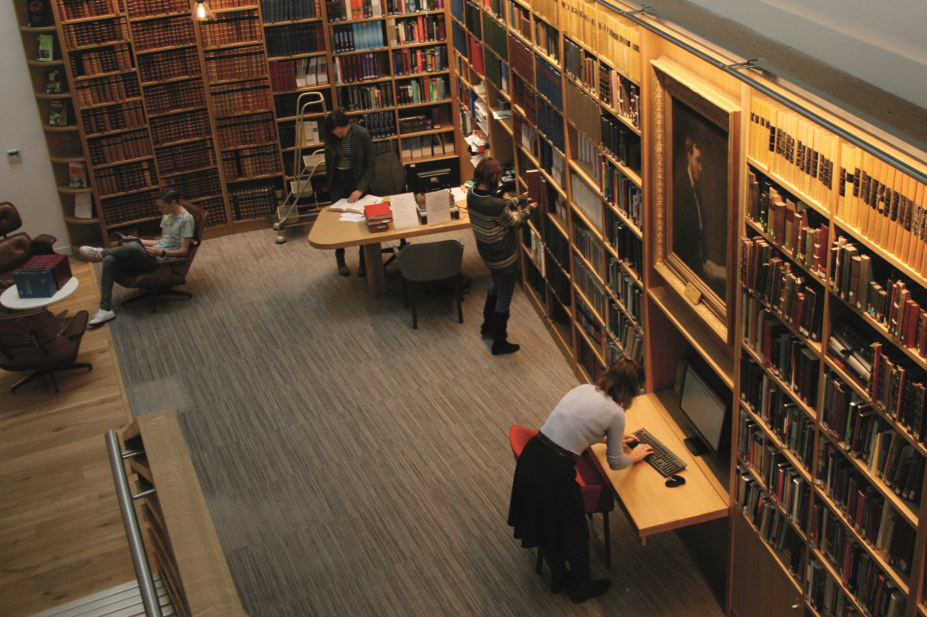
MAG / The Pharmaceutical Society
Starting from scratch
“The library is a commodious and lofty apartment, 25ft by 16ft, having two large windows and a suitable fireplace. But there is one deficiency – there are no books!”
This quote, taken from an article featured in the first volume of The Pharmaceutical Journal, published in 1841, describes the library of the Royal Pharmaceutical Society (RPS) when it first opened its doors — not really a library at all, but an empty room with blemish-free walls waiting to be filled with “ponderous volumes”.
“There is not so much as a Pharmacopoeia, or a Manual of Chemistry to amuse or instruct the members who may chance to visit,” the article continues.
Therefore, it was with a real sense of urgency that the RPS sent out a call to its members to come to its headquarters, then in central London’s Bloomsbury Square, to start a ‘Library and museum committee’.
It is recorded that the RPS council members felt strongly that without an extensive library and museum, the organisation would be “thrown in the shade” of other schools of pharmacy and that having its own would be the next step in proving itself “worthy of recognition, and capable of self-government”.
The Society also wanted the library and museum to provide the opportunity for members to progress in their education and to be considered “an heirloom” to be handed down to future generations.
In the early days, the library was totally dependent on donations. According to The Pharmaceutical Journal article in 1841, “one of the earliest acquisitions for the library should be a complete series of pharmacopoeias, from the earliest date…up to the present time”. The current RPS librarians, Jane Trodd and Karen Horn, who share the role, say that these pharmacopoeias can still be found in the collection today, although some are stored away. “We’ve certainly got an amazing collection, due to donations over the years,” says Trodd. “That early lack of books [is] why we have such an eclectic collection today.”
One of the library’s special collections — the Hanbury collection — is a series of more than 500 books once owned by leading British botany and pharmacology expert Daniel Hanbury. The books were donated to the Society’s library by his brother, Thomas, when Daniel died in 1875, aged 49 years. Hanbury was the Society’s botanical examiner, who sat on its board of examiners between 1860 and 1872. His first published work was in volume one of Transactions of the Pharmaceutical Society, followed by regular articles on the topics of plants and insects in The Pharmaceutical Journal. Hanbury was also influential in raising the profile of British pharmaceutical manufacturer, Allen and Hanburys Ltd, through his contact with scientists all over the world. A portrait of Hanbury, aged 40 years, also donated by his brother, still hangs in the library today.
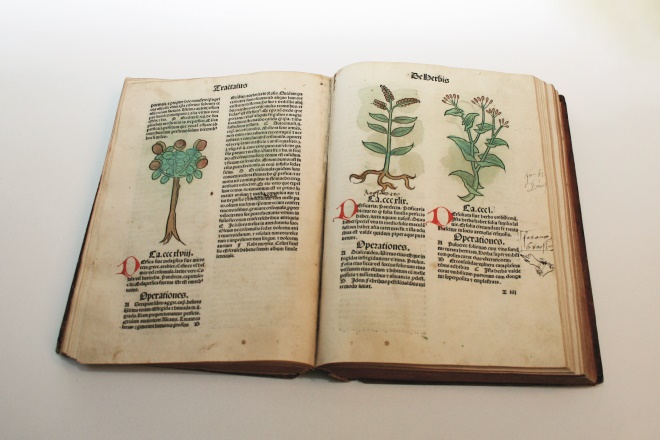
Source: MAG / The Pharmaceutical Journal
Dating back to 1491, the oldest book in the collection is written in Latin and contains hand coloured prints of creatures and herbal remedies along with hand written annotations.
Despite dating back to 1491, the oldest book in the collection is in remarkable condition. Written in Latin, it contains hand coloured prints of creatures and herbal remedies along with hand written annotations. The library also has the first copy of ‘The Extra Pharmacopoeia’, written by William Martindale, a former Society president, which dates back to 1883. The 26th and final issue of The Extra Pharmacopoeia was published in 1972 before it became Martindale: the extra pharmacopoeia. In 1999, 27 years later, it became Martindale: the complete drug reference, as it is known today. In 2008, the Pharmaceutical Press, publishers of Martindale, produced a reproduction of The Extra Pharmacopoeia to commemorate its 125th anniversary, a copy of which can also be found in the library.
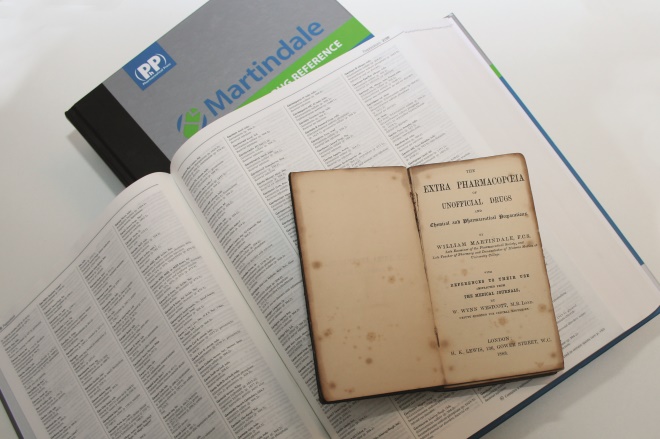
Source: MAG / The Pharmaceutical Journal
The first copy of The Extra Pharmacopoeia, written by William Martindale and dating back to 1883. In 1999, it became Martindale: the complete drug reference, as it is known today.
Rationalising the collection
In 2009, when the library was rehoused at the RPS headquarters in Lambeth, a decision was made by the RPS to rationalise the collection and introduce an e-library, resulting in the offsite storage of some of the books and journals. The collection contained a number of books no longer relevant to pharmacists: “The old pharmacies used to [stock] everything under the sun – beer making kits, cameras – so there were so many weird and wonderful books in the old library. My favourite is the ABC of Cookery,” says Trodd, whose role includes sorting through and rationalising the seemingly endless number of journals and books, a huge number of which are held in the basement store as well as off site.
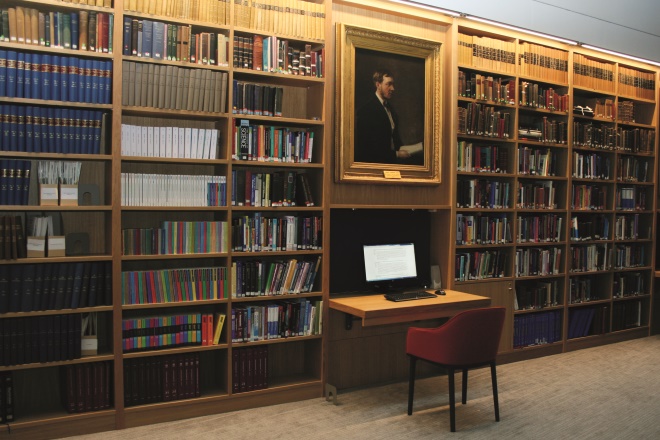
Source: MAG / The Pharmaceutical Journal
The RPS’ move from Lambeth to the current headquarters in Wapping in 2015 was challenging, particularly because the space containing the new library was originally a gravelled area, open to the elements and containing nothing but an old air conditioning unit.
“It’s quite labour intensive, as you can imagine — [it’s a] huge collection. We have about the same again downstairs in terms of reference books and 5,000 in boxes offsite that we’re keeping to date, plus others. We’ve reduced the journal collection from 1,000 to about 400 but that’s being reduced again,” she explains. Fortunately, many of the unwanted books can be donated to other organisations and countries where they are of more use.
The RPS’ move from Lambeth to the current headquarters in Wapping in 2015 was challenging, particularly because the space containing the new library was originally a gravelled area, open to the elements and containing nothing but an old air conditioning unit.
“We had to think about what stock we could fit in, bearing in mind we had less space [than in Lambeth] – things like the height of the shelves,” explains Trodd, which is no mean feat when the space you are moving into has yet to be built. “It was a lot of work but one thing that’s very positive is that the library and museum teams really worked together to make sure it all went smoothly.”
The new library
The current, on-display collection, contains a mixture of historical texts and textbooks. “[The most frequently] used are things like the British Pharmacopoeia. The Pharmaceutical Journals are used a lot, as are the Pharmaceutical Press publications and Medicines, Ethics and Practice,” explains Horn.
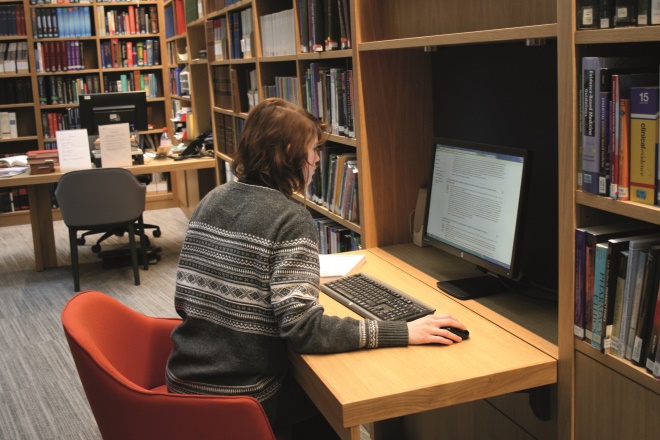
Source: MAG / The Pharmaceutical Journal
The number of people visiting the library has reduced over the years. The vast majority of the library’s visitors are virtual – in 2015 the e-library had 63,758 hits.
The number of people visiting the library has reduced over the years. Many are not RPS members, but individuals who want to research their family histories using the extensive registers. Trodd and Horn attribute the low visitor numbers to the fact that RPS members simply don’t realise the library exists as a member benefit. “Members probably aren’t aware that it’s here – wherever I’ve worked, always in specialist libraries, people are always like ‘oh I didn’t know you had a library’. It’s quite soul destroying at times,” says Trodd.
“Members are more likely to use the e-library, as they’re working throughout the day,” she adds, and the vast majority of the library’s visitors are virtual – in 2015 the e-library had 63,758 hits. Some 31 textbooks are available as e-books through the RPS’s e-library and members are able to search the catalogue remotely to find what they’re looking for – the library recently ran webinars to show members how to use the library’s databases.
Trodd and Horn are currently both considering how best to promote the library’s special collections to make them more accessible to researchers in the future, such as through a ‘sponsor a book’ scheme. As well as the Hanbury series, the special collections also include a ‘rare books’ collection, which contains around 3,500 volumes, the earliest dating back to the 15th Century. The languages in the collection vary from English to Latin, German and French and the sizes of the books range from folio size (typically about 38cm tall) to others that are so tiny they can be carried in your back pocket.
The future of niche libraries
With the rise of online resources, it could be argued that niche libraries, such as the one housed by the RPS, are becoming redundant. Trodd and Horn disagree: “You can offer a more personalised service when you’re a smaller niche library,” says Horn.
Trodd and Horn say their role is not that of a stereotypical librarian. “We never say ‘shhh’, we hardly ever stamp books and we don’t wear twinset outfits,” Trodd jokes.
Many users of the library do so via email or telephone, asking for Trodd or Horn to source articles, whether for commercial or non-commercial reasons — this may mean looking in the British Library or further afield.
“[We] act as a facilitator, a door to information — so we spend a lot of time sourcing material, talking to suppliers, comparing different products, bibliographic searching. We do a lot of admin — it’s not terribly sexy!” says Trodd.
However, this is where specialist libraries come into their own — the RPS library has every copy of The Pharmaceutical Journal plus a complete run of Chemist and Druggist. Another unique element is a large collection of grey material, including pamphlets and reports.

Source: MAG / The Pharmaceutical Journal
“You can offer a more personalised service when you’re a smaller niche library,” says one of the RPS librarians, Karen Horn.
One of the other benefits of niche libraries is that they hold extensive resources on a particular topic, but in manageable chunks, whereas larger libraries like the British Library have such huge collections on so many topics that they can sometimes be intimidating. “I’m studying at the moment and have recently been using the British Library for my research and as an information professional I found it totally bewildering,” explains Trodd. “There are all these different reading rooms and then you go in and you think, ‘I don’t know where to go’.”
“I’ve used it before and I’ve found the same thing as Jane — you get used to it but it is so vast that somehow it is daunting,” agrees Horn.
“[Here at the RPS library] it’s an individual service,” agrees Trodd. “You are also going to have that range of material on your subject. [We’ve got] pharmacopoeias and a full run of [the British National Formulary] – you can come here and you’re going to be able to find everything you want.”
Due to planned building works that will affect the library from early 2017, please call the library on 0207 572 2300 to plan your visit.
You may also be interested in
Long service of members

Membership fees 2022
